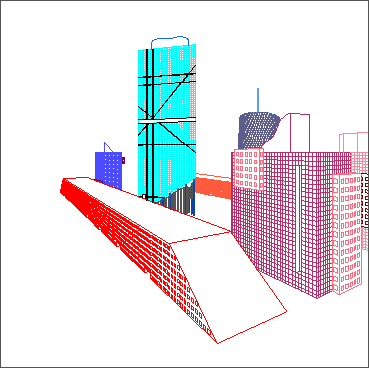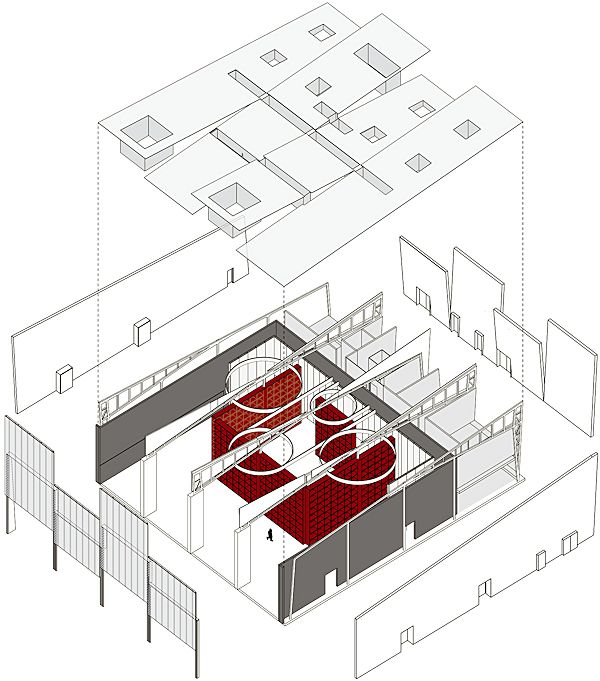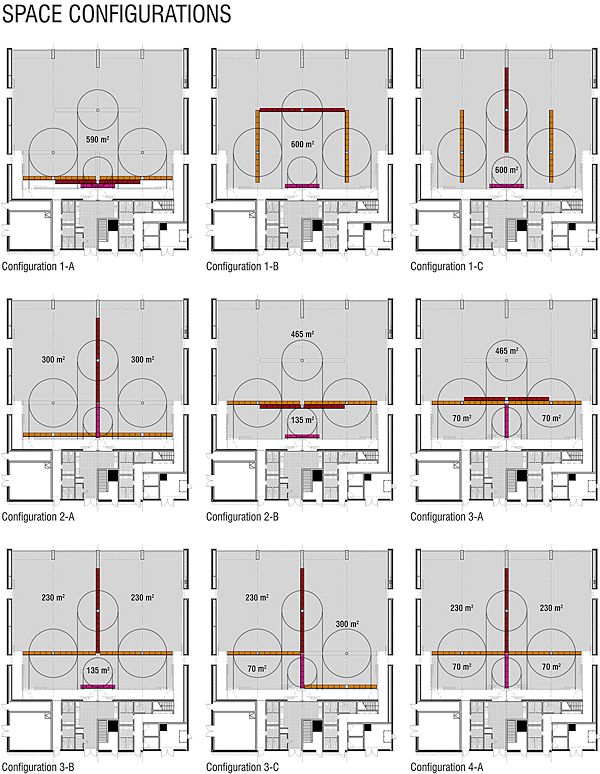2015.06.09 17:13
Renderings of BIG-Designed Two World Trade Center Revealed
The earliest stacked-box skyscraper design that I know of is within Arquitectonica's Capital Park West (1983).

In many ways, Arquitectonica can be considered the ur-OMA spinoff. Remember, Spears and Koolhaas worked together just before Arquitectonica (and OMA) was formed. And, while Capital Park West was never executed, they were nonetheless the first architects to get 'delirious New York' type architecture built, well before Koolhaas and Zenghelis themselves.
Thus I now wonder whether BIG's WTC2 will be the first stacked-box skyscraper actually built. I'm trying to think of some other such project(s) that already exists, but I'm drawing a blank--please let me know if there is. I know H&dM's NYC luxury hi-rise currently under construction, but that's a bit more voxelation than stacked-box, and there's, of course, the New Museum, but that's not really a skyscraper.
ps
Arquitectonica's Capital Park West is clearly a decendent of Leonidov's Dom Narkomtjazjprom project.
| |
1988 Netherlands Architecture Institute 2253
1991 Villa dall'Ava 2276
1992-95 Dutch House 2295
1994-98 Maison à Bordeaux 2291
1997-2003 Netherlands Embassy in Berlin 2338
1999-2004 Seattle Central Library 2341
1999-2005 Casa da Musica 2320
2002 NATO Headquarters 2343
Master plan Shunde City 201401/005
Rijnstraat 8 renovation The Hague 201401/003
Axel Springer Campus Berlin 201401/001 16100601
Milstein Hall Ithaca 16101201
2016.10.06 20:40
Architecture Without Reference
Eisenman's Berlin tower is basically an extreme arch, whereas CCTV is a 3D loop with an extreme cantilever. They're two very different things, and there really is no precedent for what CCTV does as a building (even if one might see a reference to Eisenman's Berlin tower).
| |
2017.03.17 15:17
OMA's Dubai-based "Concrete" is pretty transparent



not photos; diagrams of the intention
| |
2021.09.05 13:16
read last night--delivery of content
"I think of pavilions very much as laboratories. Julia Payton-Jones invented the program in 2000 when sho invited Zaha hadid to do the first pavilion. It was initially built for a fundraising event and was meant to last only for an evening. It was quickly decided, however, that it could stay up a bit longer. I joined the gallery six years later and have since co-commissioned the pavilions. It was interesting for me because I have always worked with architects in the context of exhibitions, but I had never really worked with an architect as a client. It was a very exciting new experience--its a very different thing to be a client! In 2006 we invited Rem Koolhaas along with Cecil Balmond. Rem felt that a pavilion without content would be nothing more than a meaningless shape, so he wanted to make the building a content machine. Yet as it turned out, it was not only the content that was a experiment but the form as well. This is often the case: many of architecture's most important inventions have come from temporary pavilions."
Hans Ulrich Obrist, "In Conversation: Hans Ulrich Obrist" in Perspecta 48: Amnesia (Cambridge, MA: MIT Press, 2015), p. 229.
|



